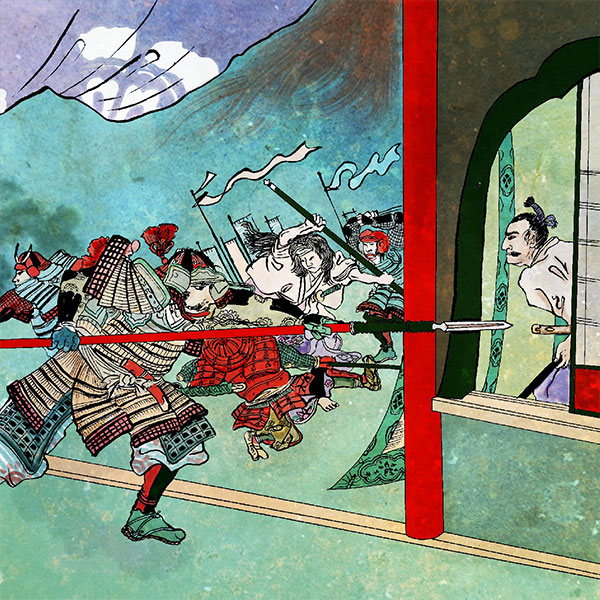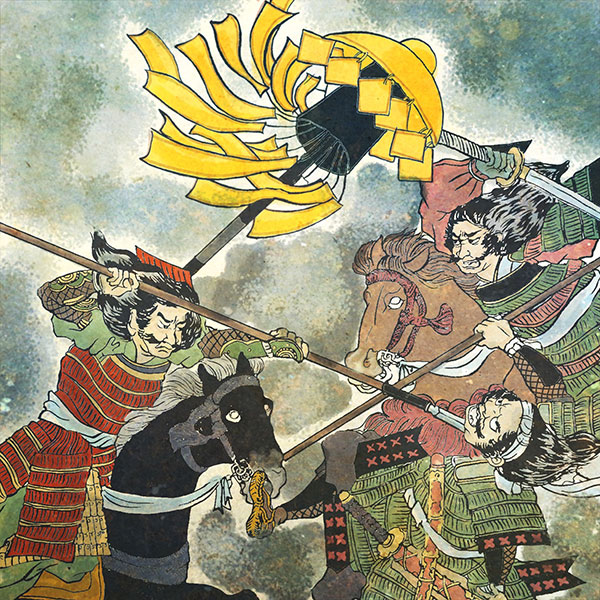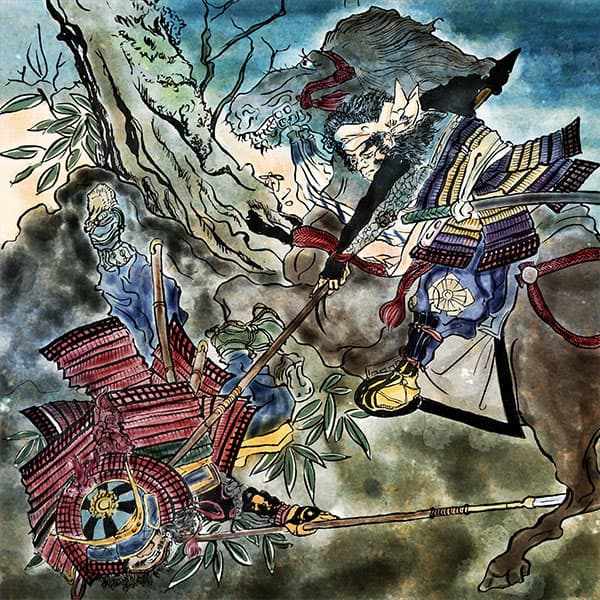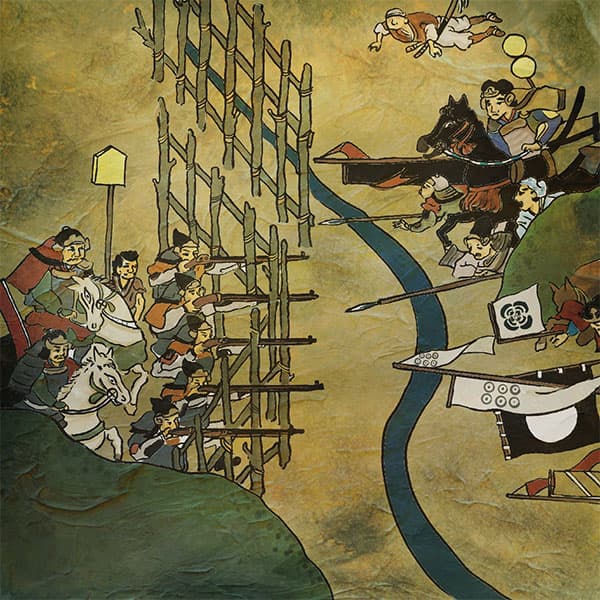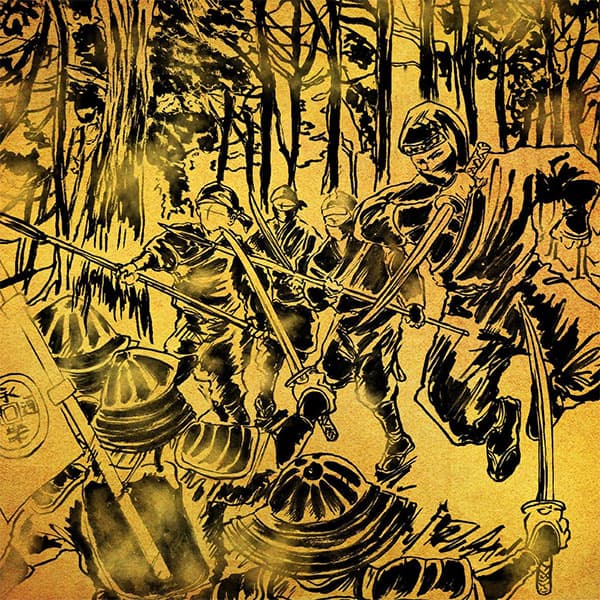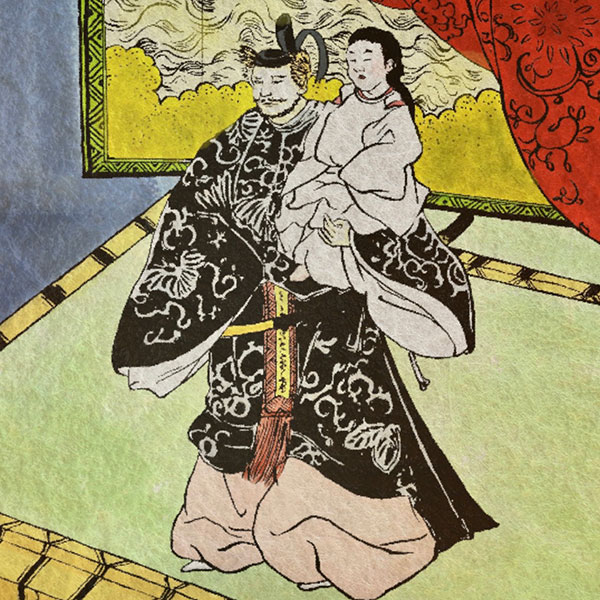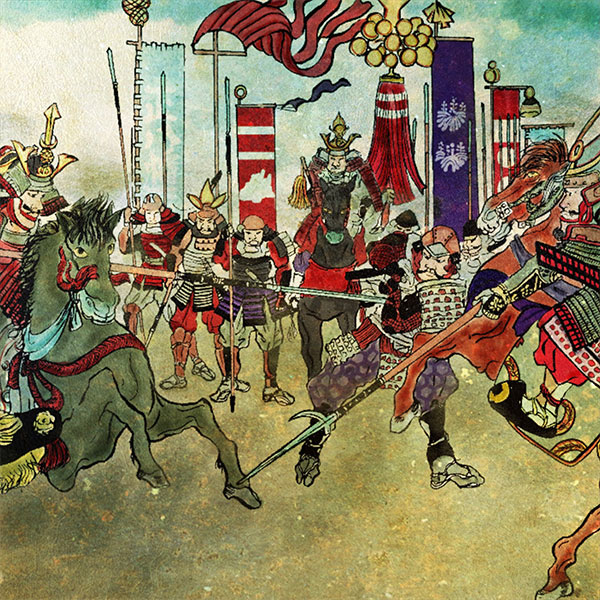Nagahide Niwa (1/2)A military commander who was highly trusted by Oda Nobunaga
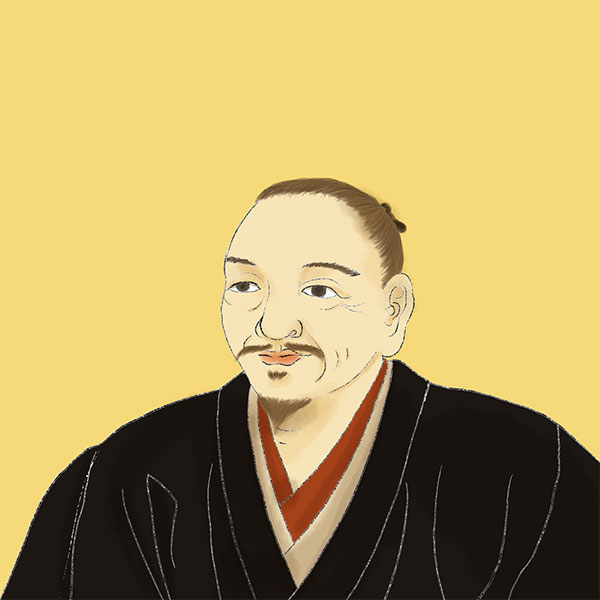
Nagahide Niwa
- Article category
- biography
- name
- Niwa Nagahide (1535-1585)
- place of birth
- Aichi prefecture
- Related castles, temples and shrines

Komakiyama Castle
- related incident
During the Sengoku period, it was essential for a warlord to recruit new retainers who excelled in military power and strategy, but they also needed truly trustworthy retainers who would serve them for generations, and family members. Among them, the Niwa family had deep ties with Oda Nobunaga, having married his daughter. This time, we will introduce the life of Niwa Nagahide, who, although modest, rose to the rank of senior retainer among Oda Nobunaga's retainers.
About the Niwa family
There are several lineages of the Niwa clan, but Niwa Nagahide is a descendant of the Kodama Niwa clan. He is a descendant of Emperor Kanmu's son, Yoshimine Yasuyo, and his real surname is Yoshimine Ason. He is a descendant of the Musashi Province Kodama Party, whose ancestor was Kodama Koreyuki, and although the genealogy before Niwa Nagahide is unclear, it is said that he served the Shiba clan, the guardian of Owari Province, for generations.
Niwa Nagahide served Oda Nobunaga from 1550, and after Nobunaga was killed by Akechi Mitsuhide in the Honnoji Incident in 1582, he sided with Hashiba Hideyoshi and fought alongside him in the Battle of Yamazaki. Nagahide also supported Hideyoshi in the Battle of Shizugatake in 1583, and after the war he was given 1.23 million koku of land in Echizen, Wakasa, and two counties in Kaga, making him a great feudal lord.
When Nagahide died in 1585, his eldest son, Niwa Nagashige, succeeded him, but in the same year, when he participated in Sassa Narimasa's invasion of Ecchu, his retainers violated military discipline and his fief was reduced to 150,000 koku in Wakasa. Furthermore, in 1587, when the Kyushu invasion took place, his retainers violated military discipline and he was confiscated from Wakasa, and he was demoted to a minor feudal lord in Matsuto, Kaga with 40,000 koku. However, because Nagashige distinguished himself in the Odawara invasion, his fief was again increased to 125,451 koku as lord of Komatsu Castle in Kaga.
However, in the Battle of Sekigahara in 1600, Nagashige sided with the Western Army, and was confiscated from Komatsu Castle and his estate of 125,000 koku by Tokugawa Ieyasu, who imprisoned him in Toba, Yamashiro Province.
He was later transferred to Shibaura, Edo, and due to his closeness to the shogun, he was given 10,000 koku of Furuwatari in Hitachi Province in 1603 (Keicho 8), and was restored to his position as a daimyo. For his military achievements in the Siege of Osaka, he was granted an additional 10,000 koku in 1619 (Genna 5), making him lord of Edosaki Domain in Hitachi Province with 20,000 koku, and in 1622 (Genna 8) he was granted an additional 30,000 koku, making him lord of Tanagura Domain in Mutsu Province with 50,000 koku. In 1627 (Kan'ei 4), he was granted another 50,000 koku, making him lord of Shirakawa Domain with 107,000 koku.
Nagashige's eldest son, Niwa Mitsushige, was transferred to the Nihonmatsu domain in Mutsu Province with a fief of 107,000 koku in 1643, and the Niwa clan continued to rule there until the Meiji Restoration.
After the Meiji period, he became a member of the nobility and a viscount, and his descendants continued to exist after that.
From birth to the first half
He was born on September 20, 1535, as the second son of Niwa Nagamasa in Kodama, Kasugai County, Owari Province (present-day Nishi Ward, Nagoya City). The Niwa clan was originally a vassal of the Shiba clan.
As he grew up, Nagahide became able to serve Oda Nobunaga. He made his debut at the age of 19 in the Battle of Umezu-Otome in 1553. He sided with Nobunaga in the Battle of Inaba in 1556, and although he was not part of Imagawa Yoshimoto's attacking force in the Battle of Okehazama in 1560, he did serve in the army.
He served Nobunaga from the time he inherited the family headship, and became one of the few remaining core retainers. According to sources such as "Nobunaga Koki," he rose to prominence in the battle against Saito Tatsuoki in Mino Province, and when Nobunaga accompanied Ashikaga Yoshiaki to Kyoto in 1568, he achieved military success by attacking Mikuri Castle in the conquest of the Rokkaku clan in southern Omi (Battle of Kannonji Castle).
Immediately after the Battle of Anegawa, Nobunaga continued his siege of Omi Sawayama Castle for eight months. On February 24, 1571 (the second year of the Genki era), the castle commander, Isono Kazumasa, received a recommendation to surrender and retreated, and Nagahide became the lord of Sawayama Castle in his place.
Towards control of Wakasa
In August 1573, he participated in the campaign to subjugate Asakura Yoshikage, who had been exerting influence in Echizen and Wakasa provinces. According to the Etsushu Gunki, after the battle, Yoshikage's mother (Kotokuin) and son Aiomaru were executed.
In September, Nagahide was given the entire province of Wakasa, becoming the first vassal of the Oda clan to hold a fief. The initial fiefs within Wakasa were roughly assigned to Nagahide in Onuki District, Awaya Katsuhisa and Kumagai Denzaemon in Mikata District, and Itsumi Masatsune in Oi District, and each lord had independent control over their own territory.
Among Nagahide's vassals at that time were Hidekatsu Mizoguchi, Masaie Nagatsuka, Hisanori Takebe, Yoshizo Yamada, and Yoshinobu Numata, and the Wakasa-shu (Takeda Motoaki, Awaya Katsuhisa, Masatsune Itsumi, Yamagata Hidemasa, Naito, Kumagai, and other Wakasa Takeda clan members and former vassals) who became direct vassals of Nobunaga as yoriki (police officers) were added to Nagahide's military organization when he dispatched forces to other provinces. In addition to military affairs, Nagahide was also responsible for maintaining order in Wakasa and controlling distribution.
Promoted to the position of senior retainer of the Oda clan
Nagahide continued to fight in battles all over Japan, including the Battle of Takaya Castle, the Battle of Nagashino, and the subjugation of the Echizen Ikko Ikki. Nagahide also demonstrated his excellent skills not only in military matters, but also in politics, achieving great success by serving as the general magistrate for the construction of Azuchi Castle.
In 1579, together with Hashiba Hidenaga of Tajima (later Toyotomi Hideyoshi's younger brother), he invaded Tamba and defeated Hatano Munenaga at Hikami Castle.
In 1581, Nobunaga ordered Ishiguro Shigetsuna, lord of Kifune Castle in Ecchu, to be executed in Omi. Terazaki Morinaga, lord of Gankaiji Castle in Ecchu, and his son, were also ordered by Nobunaga to be imprisoned in Sawayama Castle in Omi, where Nagahide was the lord, and then committed seppuku. In the same year, he was given the honor of being the first of his retainers to enter the Imperial Horse Parade in Kyoto. He also participated in the Tensho Iga Rebellion, fighting in the Battle of Hijiyama Castle and other battles.
In terms of seating order for the elder retainers, he was given the position of second elder retainer, after Shibata Katsuie, who had been promoted to that position after the fall of the leading retainer, Sakuma Nobumori, and the two were said to be the twin pillars of the Oda clan.
The Honnoji Incident and its Aftermath
In June 1582, he was appointed as the deputy commander of Oda Nobutaka's Shikoku expeditionary force (the Chosokabe expeditionary force) together with Miyoshi Yasunaga and Hachiya Yoritaka. In addition, when Tokugawa Ieyasu was traveling to Kyoto and heading towards Osaka, he was ordered by Nobunaga to take over from Hasegawa Hidekazu, who had been his guide, and to entertain him together with Tsuda Nobuzumi.
- related incident

- WriterTomoyo Hazuki(Writer)I have loved history and geography since my student days, and have enjoyed visiting historical sites, temples and shrines, and researching ancient documents. He is especially strong in medieval Japanese history and European history in world history, and has read a wide range of things, including primary sources and historical entertainment novels. There are so many favorite military commanders and castles that I can't name them, but I especially like Hisashi Matsunaga and Mitsuhide Akechi, and when it comes to castles, I like Hikone Castle and Fushimi Castle. Once you start talking about the lives of warlords and the history of castles, there's a side of you that can't stop talking about them.


